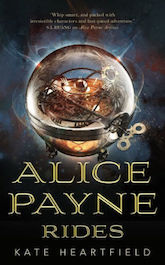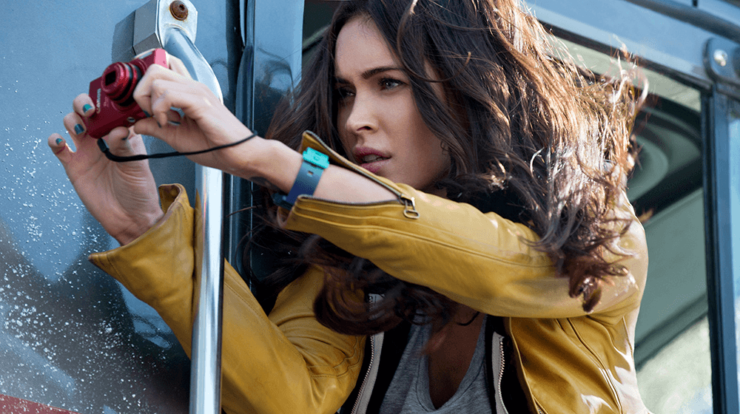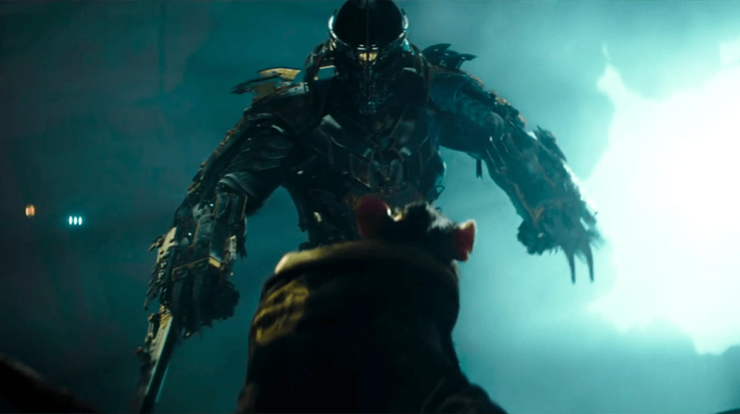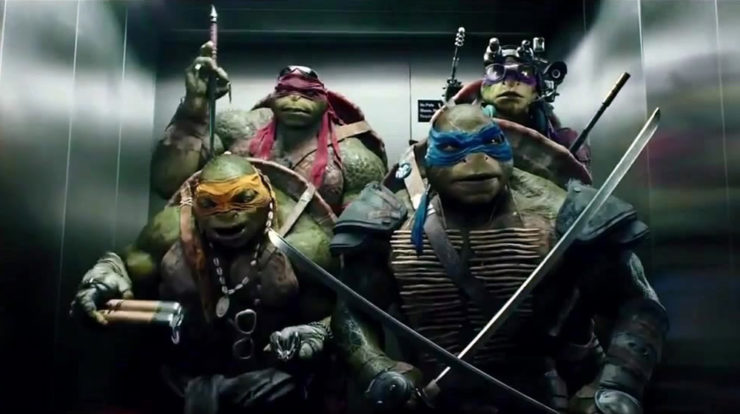While 1993’s Teenage Mutant Ninja Turtles III didn’t do well enough to warrant a fourth film, the heroes in a half-shell continued unabated in various forms throughout the rest of the 1990s and the 2000s, both in comic books and on screen. The most successful was the animated series, which ran from 1987-1996. That was followed by a live-action series called Ninja Turtles: The Next Mutation in 1997, which only lasted a season; a 2007 animated sequel to the three live-action films called TMNT; and two new animated series, one from 2003-2009 and another from 2012-2017 (another would debut in 2018). Plus the Turtles continued to be published in comics from Mirage, as well as Image and more recently IDW.
And then in 2014, a new film was made.
In 2009, Nickelodeon purchased all the rights to the Ninja Turtles, lock, stock, and bo staff. This included an announcement of a new movie in development that Nickelodeon’s parent company Paramount would distribute, and they brought in Michael Bay’s Platinum Dunes production company to put the movie together.
Buy the Book


Alice Payne Rides
The film was wracked with controversy from the moment Bay’s involvement was announced, as Bay’s reputation for big ‘splosions and spectacle wasn’t entirely compatible with the goofy fun of a TMNT movie. That controversy then blew totally up when details of the planned movie were revealed, including that the Turtles and Splinter would be aliens, and that the movie would just be called Ninja Turtles. Then one of the drafts by Josh Appelbaum and André Nemec was leaked, and it included not only that the Turtles and Splinter were aliens from another dimension (which was full of turtle warriors), but that April O’Neill and Casey Jones were both teenagers, and Shredder was instead Colonel Schraeder, the leader of a black ops unit called “the Foot.” The massive (and completely justified) fan backlash to these reveals caused Bay to backpedal so fast it broke the speed of sound. Evan Daugherty was hired to rewrite the script, and later uncredited drafts were done by Jacob Sullivan and Darius Jackson. The new drafts dropped Jones (saved for the 2016 sequel), returned Shredder and the Foot to their proper selves as an armored samurai warrior and his army of ninjas, made O’Neill an adult, and kept the heroes’ origins as being an actual rat and four turtles who were mutated.
With the march of technology, Bay et al decided to render the Turtles and Splinter with motion capture and CGI rather than animatronics as the previous live-action films did. Pete Ploszek, Jeremy Howard, Alan Ritchson, and Noel Fisher did the motion-capture for, respectively, Leonardo, Donatello, Raphael, and Michelangelo, with all save Ploszek also providing the voices—Leonardo was voiced by Johnny Knoxville. Danny Woodburn did the motion capture for Splinter, with Tony Shalhoub providing the voice.
Megan Fox played O’Neill, with Will Arnett playing her camera operator Vern Fenwick (a nicer version of the rival reporter from the 1987 animated series), and Malina Weissman playing O’Neill as a child. Whoopi Goldberg, whose daughter is a huge TMNT fan, had been wanting to appear in one of the movies for ages, and finally got to here, as Bernadette Thompson, a gender-flipped version of O’Neill’s boss at Channel 6, also from the 1987 series.
The villains are played by Tohoru Masumune (Shredder), William Fichtner (Eric Sacks), and Minae Noji (Karai).
“Have you seen that video where the cat is playing ‘Chopsticks’ with chopsticks?”
Teenage Mutant Ninja Turtles
Written by Josh Appelbaum & André Nemec and Evan Daugherty
Directed by Jonathan Liebesman
Produced by Michael Bay, Andrew Form, Brad Fuller, Galen Walker, Scott Mednick, & Ian Bryce
Original release date: August 8, 2014

An opening voiceover has Splinter telling the four mutated turtles that they must keep training until the time is right, and then they may go out into the world and become heroes.
April O’Neill of Channel 6 is investigating crimes committed by the Foot Clan, a gang of ninjas who have singlehandedly spiked New York City’s crime rate something fierce. O’Neill’s investigation has to be cut short because she’s filming a puff piece in Madison Square Park about a fitness expert. Afterward, she bikes to the docks in Brooklyn to where she thinks the Foot may strike next.
Sure enough, they do, but they’re stopped by a single figure who is strong enough to throw shipping crates around. O’Neill gets a picture, but it’s fuzzy. The vigilante also leaves a Japanese kanji character on a crate.
O’Neill’s boss at Channel 6, Bernadette Thompson, is uninterested in the story. Later, O’Neill covers an event co-hosted by the mayor and by Eric Sacks, head of Sacks Industries, and a former associate of O’Neill’s father before he died. Sacks gives her some encouragement.
Shredder, the head of the Foot Clan, is not happy about the vigilante, who has disrupted their jobs before. His lieutenant, Karai, brings a team of ninjas to take hostages at the Broad Street station in lower Manhattan, hoping to draw the vigilantes out. O’Neill is one of the hostages, and she sees four six-foot-tall talking turtles wielding edged and blunt weapons and making short work of the Foot Clan ninjas.
O’Neill follows them to a rooftop and takes their picture. The Turtles are not happy about that, as they’re supposed to be covert, and they frighten her—but she also is stunned to hear them referred to by their names, which are those of Italian Renaissance painters. Donatello erases the picture from her phone, and they leave.
Going home quickly, O’Neill digs up some old files in her closet. Her father was part of a scientific endeavor called Project Renaissance. They were experimenting on four turtles, and also a rat, in an attempt to perfect a serum that would cure all ills, using an alien substance they’d obtained. But there was a fire that killed O’Neill’s father and destroyed all the research. O’Neill herself was able to rescue the four turtles—who’d been nicknamed Donatello, Leonardo, Michelangelo, and Raphael—and the rat and send them into the sewers where they’d be safe.
The four turtles were color-coded to identify them, and the four big-ass turtles she just met were each wearing masks the same color as their paint splotch when they were baby turtles. O’Neill is stunned, and manages to put it together that these are the same turtles, all grow’d up, and they’ve been fighting the Foot covertly. The kanji has been left at several crime scenes, and it means “family.” However, when O’Neill tries to explain this to Thompson, she’s met with overwhelming skepticism, and is eventually fired.
Her camera operator, Vernon Fenwick, offers her a lift, and she asks to go to Sacks’s mansion in the mountains. (Fenwick is skeptical with regards to her story of ninja mutant turtle teenagers, but at least he doesn’t laugh at her.) She tells Sacks what she’s learned, and Sacks explains what he and O’Neill’s father were trying to do. He gives her a business card and says to call him if she finds the Turtles, as he’s been unable to replicate her father’s work.
We then learn that Sacks is working for the Foot, a revelation that comes as absolutely no surprise because he’s being played by William Fichtner. He has a tracker on his business card, so as soon as O’Neill finds the Turtles, they’re his.
Splinter catches the Turtles sneaking back into the base, and he’s livid, as he told them not to go out. At first they don’t tell him what they were doing, but eventually Michelangelo gives in, tempted by 99-cheese pizza.
Initially Splinter is upset, but when he finds out that O’Neill is the one who saw them, he instructs them to find her and bring her to him. They do so, and Splinter explains that she rescued them from the fire, and that they grew very quickly to sentience and maturity underground. Someone threw away an instruction book on martial arts that Splinter found, and so he taught himself and then the four baby turtles, in order to give them discipline. The Turtles are astounded that the hogosha, the great guardian spirit who rescued them from oblivion, is O’Neill.
The Foot Clan attacks the headquarters, having traced Sacks’s business card. Splinter is badly injured by Shredder, Raphael is buried under rubble, and the other three Turtles are kidnapped. They’re taken to Sacks’s mountain mansion where he will drain their blood to remove the serum that gives them their strength. Sacks monologues to the Turtles, saying that the Sacks Tower in midtown has a ton of a deadly virus in its rooftop spire. He will release it, tons of people will die, and Sacks Industries will provide the cure—which he’s extracting from the Turtles’ blood.
Raphael and O’Neill need to get to Sacks’s mansion, so she calls Fenwick, who thinks it’s an excuse for a date. He’s rather gobsmacked to meet Raphael, belatedly realizing that O’Neill isn’t crazy and she really did meet a six-foot-tall armed talking turtle.
They drive up the mountain, trashing Fenwick’s Channel 6 van in the process. Raphael, O’Neill, and Fenwick are able to deal with the Foot soldiers (ahem), but Sacks escapes with the serum in a helicopter. O’Neill manages to free the other three Turtles by hitting them with a ton of adrenaline. They steal a truck and drive it down the mountain—not down the mountain road, mind you, but straight down the mountain—at least part of the way being chased by Karai and the rest of the Foot Clan. At one point, Fenwick is too busy staring at O’Neill’s ass (she’s leaning out the window taking pictures) that he crashes into a snowdrift.
However, our heroes manage to find a tunnel that will lead through the sewers to Manhattan. They arrive just as Shredder is about to kill most everyone in Manhattan. The Turtles head to the roof while O’Neill and Fenwick confront Sacks. Sacks shoots Fenwick in the shoulder, but eventually, they are able to take Sacks down and grab the serum. Sacks also admits to killing O’Neill’s father himself.
Meanwhile, the Turtles try to stop Shredder, and aren’t successful until they use teamwork. However, their battle breaks the spire, and it takes all four of them to hold it up. Shredder, who is badly beaten, but not yet defeated, is about to attack them when O’Neill arrives, threatening to destroy the serum—which means Shredder and the Foot Clan will be just as susceptible to the virus. Shredder goes after O’Neill, the Turtles try to save her, and the spire falls, crashing onto another roof. They manage to knock Shredder and the serum off the spire and he falls to his doom. The city is saved.
They bring the serum to the underground HQ and give it to Splinter, who is also saved. He admits that he was selfish in wanting to keep them underground, and gives them his blessing to continue fighting for justice. They now have a tricked out car and everything…
“We’ll drain every drop of their blood, even if it kills them”

It has to take some kind of skill to do a movie about four ambulatory talking turtles with martial arts skills fighting an armored samurai and his ninja warriors and make it boring, but Michael Bay, Jonathan Liebesman, and the army of screenwriters managed it.
This isn’t even a bad movie—it’s just kind of there. There are almost no memorable lines of dialogue, the action is perfunctory, the villains are obvious, and the whole thing is just dull as heck.
It doesn’t help that it’s retreading old ground. There’s no qualitative difference, plot-wise, between this and the same-named film from 1990. Hell, some of the callbacks are deliberate, like O’Neill fainting when she sees the Turtles. But it does everything worse than the ’90 film.
CGI had, by 2014, been advanced sufficiently, especially in conjunction with motion-capture, to make the Turtles realistic enough. The problem is, honestly, they’re too realistic. The Turtles are supposed to be a little bit goofy. Indeed, allegedly Bay sent the movie back for reshoots because there wasn’t enough lightheartedness in it, and so they put in things like the beat-music bit in the elevator as they’re riding up fifty-plus flights to confront Shredder. Out of context, that bit is actually a lot of fun, but it feels crowbarred into the story there, since it’s horribly out of place as they’re about to confront a guy who’s trying to poison an entire city. And indeed, the hyper-realism of the Turtles makes them too nasty-looking for the comedy bits to really work right.
The whole movie is like that, shifting from a silly movie about goofy evolved adolescent martial artist testudines to a dark, violent action movie about vigilantes trying to stop a crime wave. The two tones never mesh and are regularly at odds with each other.
The CGI Turtles are hit-and-miss as well. Mostly, the detail work is excellent—I like that each Turtle has a distinct look beyond the color of their mask, from Raphael’s full bandana rather than a domino mask to Michelangelo’s surfer-dude shell necklace to Leonardo’s button that has the old NYC token logo on it to Donatello’s steampunk-ish accoutrements for his gadgets. But the movements are a little too over-the-top. The fight scenes are more like watching a videogame than actual physical living beings jumping and hitting and kicking and swinging. By this point, CGI had evolved to the point where computer-generated images had mass, but the 1990s movies (especially the third one, where the animatronic turtles used actual martial arts moves) felt more tactile.
It’s funny, the first scene I saw from this movie was a YouTube clip of the final confrontation with Shredder on the roof of the Sacks Tower, and I thought the CGI was awful—once I saw the whole movie, I only felt that way about that bit. Every other scene with the Turtles is in the dark, whether at night outside or in the tunnels beneath the city, or surrounded by precipitation of some kind (either rain or the snow of the mountain). That climax is the only scene in broad daylight without rain or snow, and it does the CGI no favors at all.
It doesn’t help that the script is just awful. While only three writers were credited, at least four other people worked on this, from the original screenwriters hired back in 2009 to the script doctors brought in later, and it’s exactly as awesome as you’d expect a script-by-committee to be. (Not that all scripts-by-committee are like that, of course, but this is a particularly poor example of the breed.) The only intentionally funny lines that land are those uttered by Will Arnett’s Fenwick, leading me to think that perhaps Arnett did a certain amount of ad-libbing.
The acting ranges from decent to mediocre. Arnett’s fun, and Whoopi Goldberg is obviously having a great time just being in a Turtles movie. Tony Shalhoub is perfectly adequate as the voice of Splinter, but I found myself missing Kevin Clash’s stentorian tones from the 1990s movies. The four Turtles are also perfectly adequate. Johnny Knoxville is much easier to take when you don’t have to look at him, and—just as with the previous three—Raphael (here voiced by Alan Ritchson) is the most compelling. All the villains are clichéd and boring, and Megan Fox reads her dialogue competently and stares wide-eyed at things a lot.
While the film was critically panned like whoa, it did well enough at the box office to greenlight a sequel two years later, subtitled Out of the Shadows, which we’ll cover next week.
Keith R.A. DeCandido‘s latest novel is A Furnace Sealed, the debut of his new Bronx-based urban fantasy series “The Adventures of Bram Gold.” Ordering information and an excerpt can be found here.










